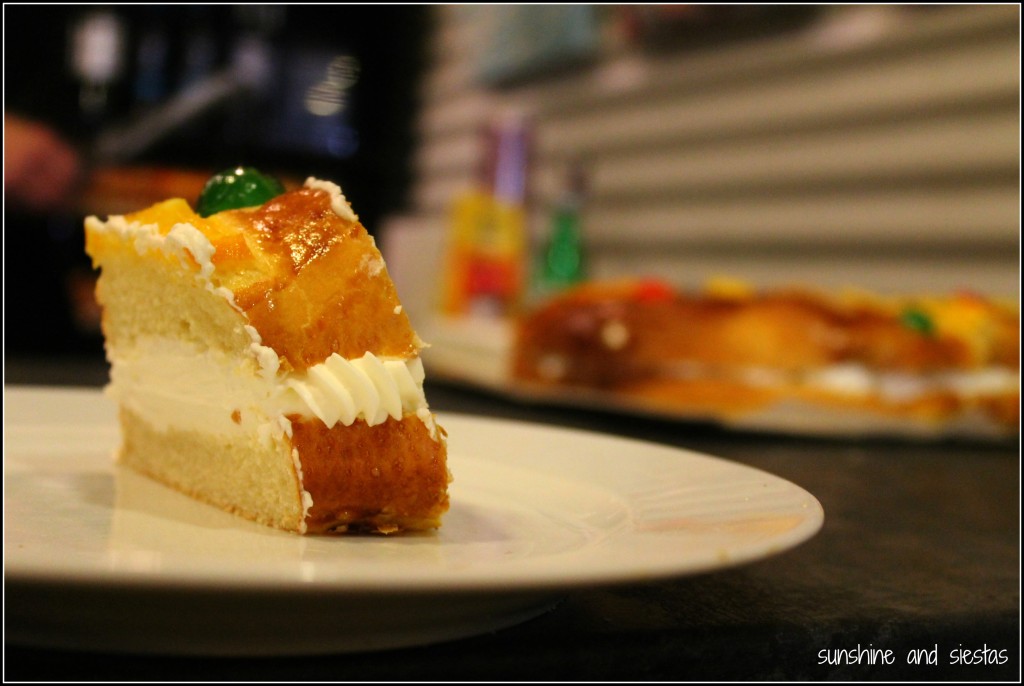Leonor predicted it – she said she thought 2013 would be my year. Apart from earning a master’s in Public Relations 2.0 from the Universidad Autónoma de Barcelona, I did big things in travel: crossing off a major goal from my life to-do list, traveling to my 30th country and celebrating world-famous festivals.
Oh, and I got a promotion, too!
2014, you better live up to this year in travel, one in which I visited five new UNESCO World Heritage sites, 30 cities, and eight countries, and took nine round-trip flights and a boat. I also walked 325 kilometers across Spain for charity.
July
For the fifth straight summer, La Coruña welcomed me with sea breezes, seafood and a smattering of festivals. I love returning to a city over and over again that I truly enjoy, and Coru is one of those places. The rain held off for all but the first and last day of camp, meaning a bit of beach time and more freckles.
It wasn’t all fun and pulpo, though, as I was working on the oral defense of my master’s thesis project, one that dealt with promoting Marca España in the US. I wish I could say that this blog was enough, but, alas, I had to catch a Vueling flight to Barcelona in the middle of camp. In 20 hours, I had flown across the country, met my group members for the first time face-to-face, had the Powerpoint stop working when I got to the numbers part of our presentation (for real, these things only happen to me), and then flew back with a 9,0 in the presentation and the need for a small celebration.
Once camp had wrapped up, I sent my rebajas-laden bag to Seville and traded it for a hiking bag and boots. I stopped in Oviedo to visit my friend Claudia and take in the pre-Romanesque churches of the city before spending the night in Avilés.
You know what follows.
August
When August hit, Hayley and I were about ten days from reaching Santiago de Compostela by foot. Traipsing through Northern Spain with our own two feet was at trying as it was rewarding, and I learned a lot about myself in the process.
Luarca, Ribadeo, Vilalba, Playa de las Catedrales and Cudrillero got our touristic euros, but I think we gained a lot more than we thought we would.
We reached the Cathedral of Santiago de Compostela before Pilgrim’s Mass on August 12th. Going home, I experienced an enormous slump where I found decision making difficult, the heat unbearable and a body that just needed to move, move, move.
That didn’t last for long, because I had purchased tickets to go to the Tomatina. For an American, this is one of Spain’s claims to fame, and though I had a great time slinging rotten tomatoes, I’m not keen on going again.
September
I began the new school year with a new job title – Director of Studies – and new responsibilities. After a successful start (just a few hiccups!), I traveled to Frankfurt to visit my cousin, Christyn, who works in Kaiserslautern. We took an overnight bus to and from Munich to attend Oktoberfest.
As a beer lover, I think this was as close as I’ll ever get to Nirvana.
October
I traveled locally this month, going to a fancy dinner party in Jerez at a bodega, and then rekindling my love with the province of Huelva by attending their ham festival.
We ate and drank all weekend. Perfect.
November
November found me in Malaga twice – the first time was for a conference of Anglo Writers and Bloggers About Spain held in Pedragalejo. We got a warm sunny weekend, and spent the days under a tent at OnSpain, an innovative language school just steps from the beach. Hayley and I launched our up-and-coming business idea, as well as met other bloggers, like Molly of Piccavey.
Later that month, Mickey and I were invited to take part in A Cooking Day in the Malgueño countryside. While we got horribly lost, we did spend a morning picking fruit, and the afternoon cooking up local specialties and eating, enjoying the Spanish sobremesa until it grew dark.
December
The Novio and I finally escaped to his village, San Nicolás del Puerto, for the first time since June. In a town with not much to do, we find time to relax (although I did get a turn as a farm hand!) and attend a festival for one of the patron saints, Santa Bárbara.
December also brings me back to Munich, but this time I actually get to see some of the city!
Currently, I’m somewhere on the Danube River with my parents on a Viking Cruise. Along the way, we’re stopping in Passau, Germany, Salzburg, Vienna, Bratislava (oh goody, a new country!) and Budapest. I’ve already traveled to the majority of these places, but have not written about them on Sunshine and Siestas, surprisingly!
Then I’ll spend the 31st in the Madrid mountains with the Novio’s family, no doubt thinking about how good 2013 was to me, both personally and professionally.
On Docket for 2014
These itchy feet only have two things on the agenda for 2014 so far: a weekend in Tenerife visiting my friends Julie and Forrest, and a trip home to Chicago. I’ve also got to get to Trujillo from an invitation from Trujillo Villas, and am hoping to make Toulouse, Jaén, Ceuta and Dublin happen.
What did your year in travel look like? What’s up for 2014?














































